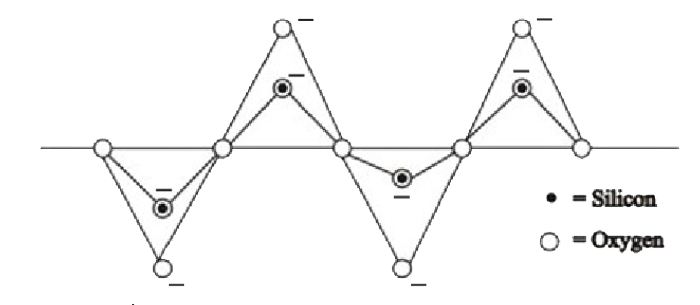Boric aicd has polymeric layer structure in which plannar BO3 units are joined by
covalent bonds
two centre-two electron bonds
coordinate bonds
hydrogen bonds.
The correct Answer is:D
To solve the question regarding the structure of boric acid and how the planar BO3 units are joined, we will follow these steps:
1. Understanding Boric Acid Structure:
- Boric acid is represented by the formula H3BO3. It consists of boron (B) surrounded by three hydroxyl (OH) groups and is often depicted as planar BO3 units.
2. Identifying the Units:
- Each BO3 unit can be visualized as a triangular planar structure where boron is at the center and three oxygen atoms are at the corners.
3. Joining of BO3 Units:
- The question asks how these planar BO3 units are connected in the polymeric structure of boric acid.
4. Examining Types of Bonds:
- We need to analyze the types of bonds that can connect these units. The options given are:
- A) Covalent bond
- B) Two-center two-electron bond
- C) Coordinate bond
- D) Hydrogen bond
5. Analyzing Hydrogen Bonds:
- In the case of boric acid, the hydroxyl groups (OH) on the BO3 units can form hydrogen bonds. The oxygen atom of one BO3 unit can interact with the hydrogen atom of another BO3 unit, creating a network of hydrogen bonds.
6. Conclusion:
- Therefore, the planar BO3 units in boric acid are joined primarily by hydrogen bonds. Thus, the correct answer is option D: hydrogen bond.
Final Answer:
The correct answer is D) hydrogen bond.
- Boric acid is represented by the formula H3BO3. It consists of boron (B) surrounded by three hydroxyl (OH) groups and is often depicted as planar BO3 units.
- Each BO3 unit can be visualized as a triangular planar structure where boron is at the center and three oxygen atoms are at the corners.
- The question asks how these planar BO3 units are connected in the polymeric structure of boric acid.
- We need to analyze the types of bonds that can connect these units. The options given are:
- A) Covalent bond
- B) Two-center two-electron bond
- C) Coordinate bond
- D) Hydrogen bond
- In the case of boric acid, the hydroxyl groups (OH) on the BO3 units can form hydrogen bonds. The oxygen atom of one BO3 unit can interact with the hydrogen atom of another BO3 unit, creating a network of hydrogen bonds.
- Therefore, the planar BO3 units in boric acid are joined primarily by hydrogen bonds. Thus, the correct answer is option D: hydrogen bond.
The correct answer is D) hydrogen bond.
Topper's Solved these Questions
- THE P-BLOCK ELEMENTSBOOK - NCERT FINGERTPS ENGLISHCHAPTER - THE P-BLOCK ELEMENTSEXERCISE - HIGHER ORDER THINKING SKILLS
9 Videos
- THE P-BLOCK ELEMENTSBOOK - NCERT FINGERTPS ENGLISHCHAPTER - THE P-BLOCK ELEMENTSEXERCISE - EXEMPLAR PROBLEMS
15 Videos
- STRUCTURE OF ATOM BOOK - NCERT FINGERTPS ENGLISHCHAPTER - STRUCTURE OF ATOM EXERCISE - Assertion And Reason
15 Videos
- THE S-BLOCK ELEMENTSBOOK - NCERT FINGERTPS ENGLISHCHAPTER - THE S-BLOCK ELEMENTSEXERCISE - Assertion And Reason
15 Videos
Similar Questions
Which has apyramidal structure?
View SolutionWhich compound has planar structure:
View SolutionWhich has hcp crystal structure ?
View SolutionWhich compound has planar structure:
View SolutionWhich has hcp crystal structure ?
View SolutionWhich compound has tetrachedral structure ?
View SolutionBoric acid H3BO3 is a:
View SolutionStructure which joins two bones at the joints is formed of
View SolutionWhich of the following has pyramidal structure ?
View SolutionPyroxenes are class of silicate minerals, which exhibit a polymeric chain structure, as shown below

Its simplest repeating unit is
View Solution
